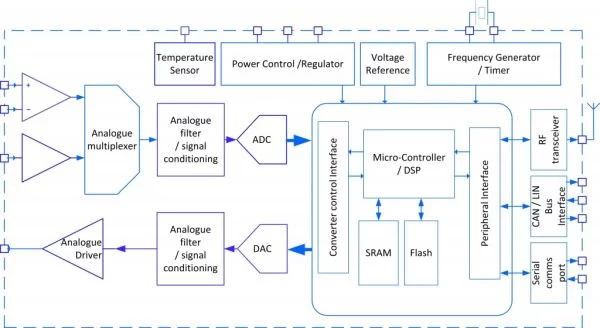Contents
hide
Traditionally, asic developments are thought to be the domain of high volume applications. Whilst these designs grab the headlines there are many designs that are successfully undertaken for smaller volume product markets.
An example of this is the mixed signal asic for industrial controllers. These controllers cover many industries and come in many forms. The basic premise, though, is for a system to monitor and react to a defined set of performance parameters. This usually incorporates some sort of feedback loop which the control system will act upon.
It is here, in the measurement and sensing part of the system that the mixed signal asic has become prevalent as tighter constraints and less hysteresis becomes desirable. Input signals can be anything from positional information to temperature, pressure, gas detection etc.
Today, the world is thought of as digital, however in reality the sensors are analogue and there is signal conditioning and conversion to the digital domain to be performed to allow them to interface with the control systems. Due to the nature of where the sensors are placed (often in confined and difficult environments) it becomes an obvious conclusion to design and deploy an asic. These systems are typically in operation for many years and again the additional benefit of obsolescence protection by using an asic becomes an important factor for lifetime maintenance and spares.
Today, it is possible to integrate substantial functionality into an asic, especially at the smaller 22nm and even 14nm CMOS geometries.
However, these geometries are best suited for predominately digital designs because analogue design becomes more challenging as the voltage can be reduced and the area benefits for the analogue part quickly tail-off. So for industrial mixed signal designs the favoured geometries tend to be in the 350nm to 110nm range.
For more detail: Mixed-signal asics are good even for smaller volume products


